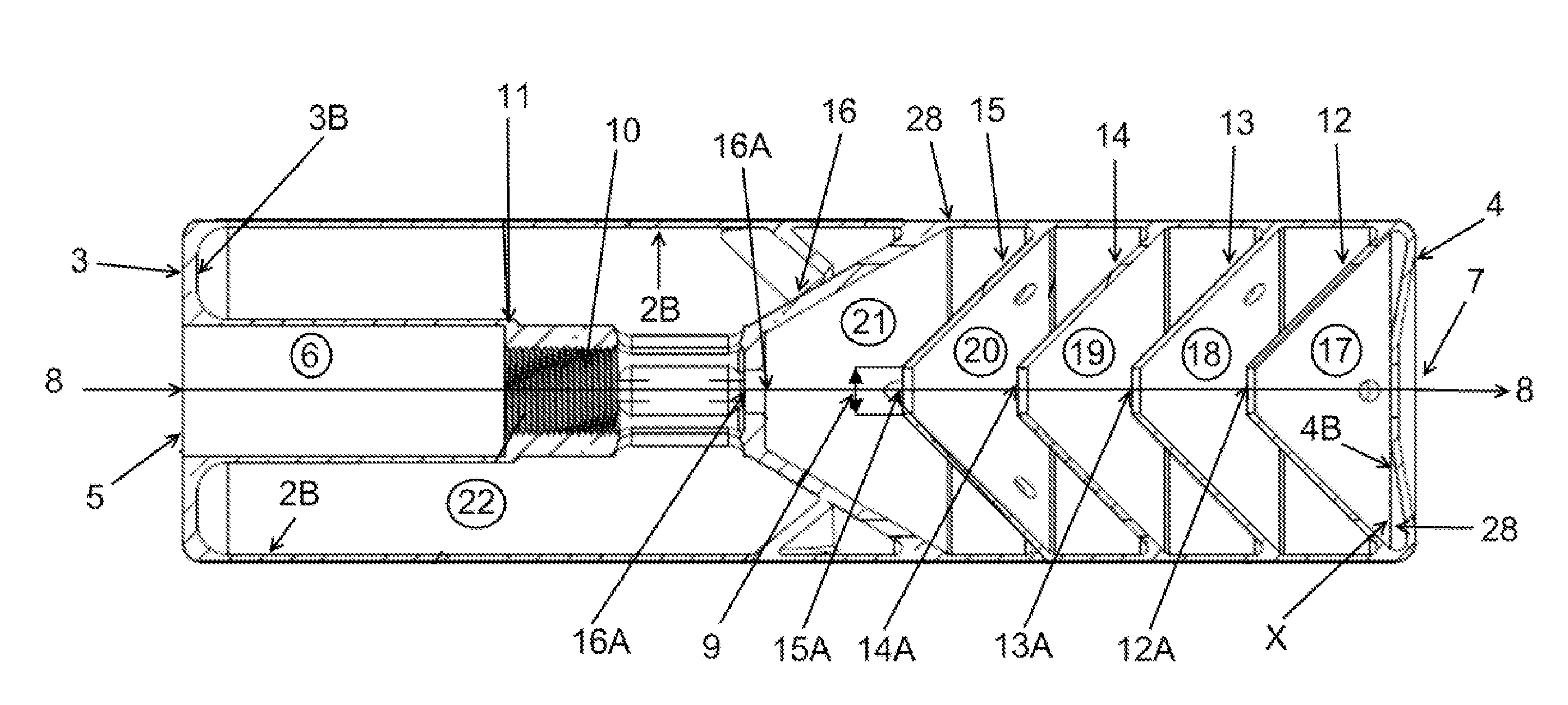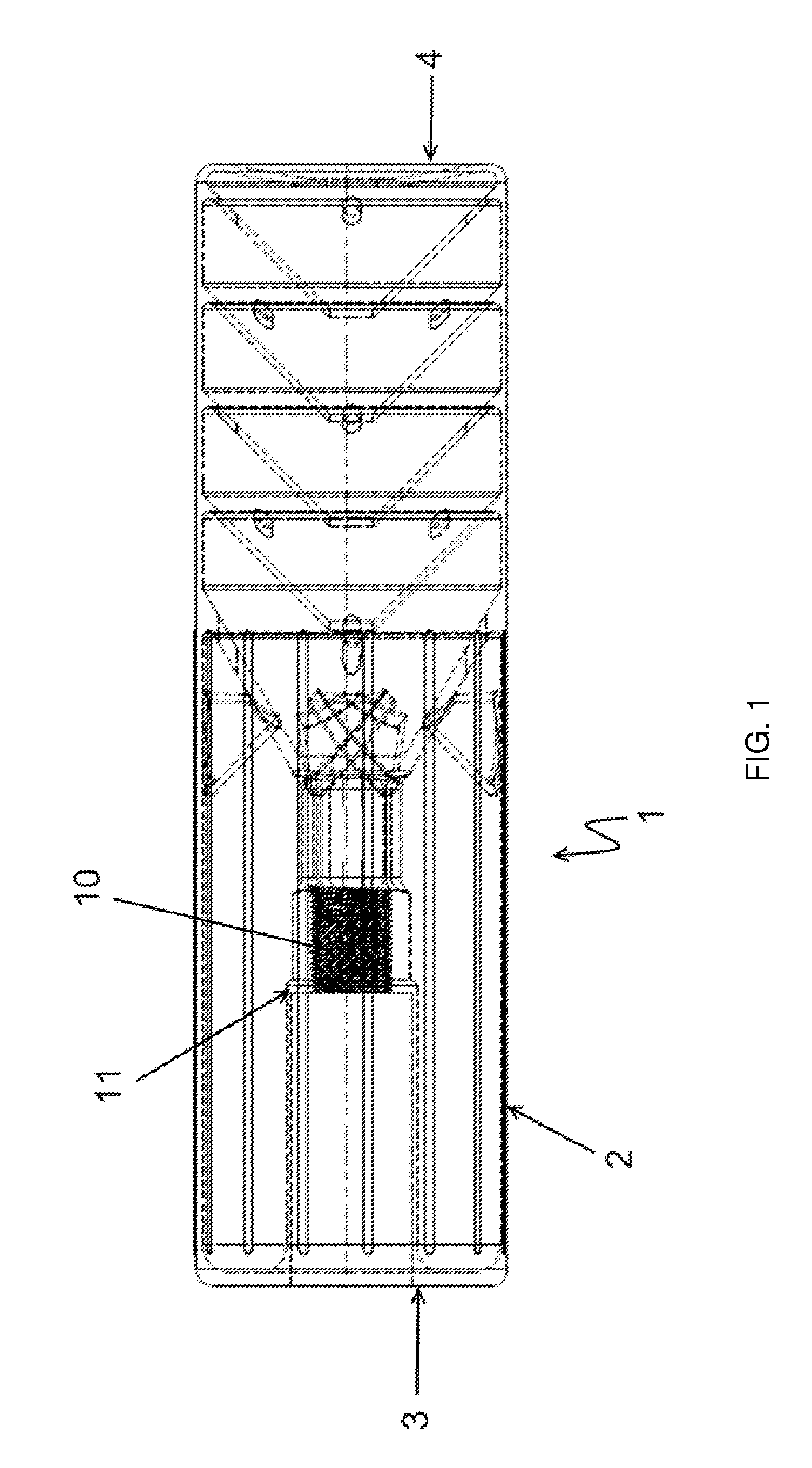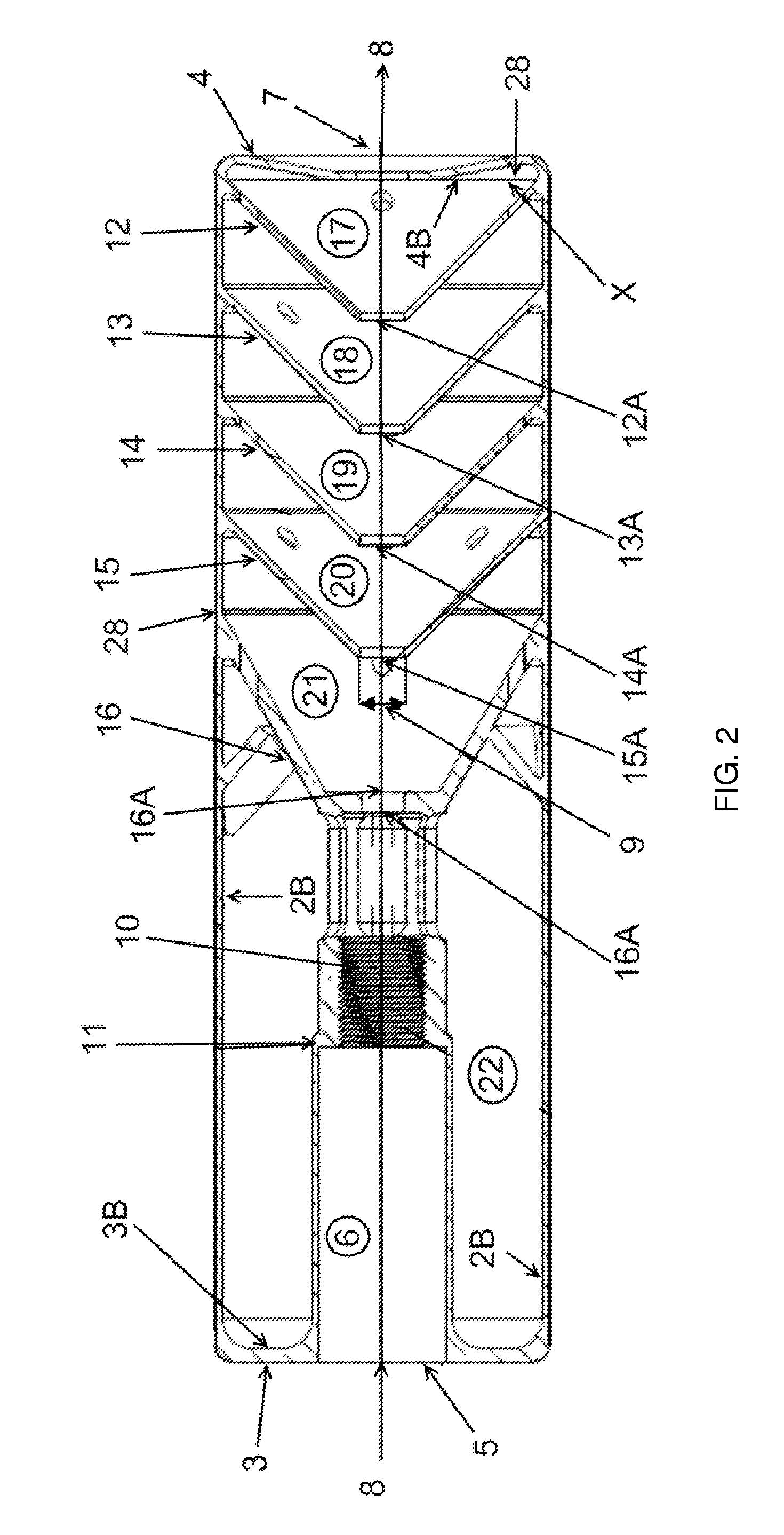Suppressors and their methods of manufacture
- Summary
- Abstract
- Description
- Claims
- Application Information
AI Technical Summary
Benefits of technology
Problems solved by technology
Method used
Image
Examples
third alternate embodiments
First, Second and Third Alternate Embodiments
[0173]FIGS. 3, 4 and 6 show views of alternate embodiments of suppressors (29,30,31) according to the present invention. Identical numbers are used to refer to the components of suppressors (29-31) in FIGS. 3, 4, and 6 that are the same as the components of suppressor described with reference to FIGS. 1 and 2. However the arrangement / orientation of the baffles differ so as to facilitate provision of a suppressor that may be better suited to use with different types of guns.
fourth alternate embodiment
[0174]Referring now to FIGS. 9A-9D, showing a further embodiment of a suppressor (40).
[0175]The suppressor (40) has a substantially triangular cross section as is best shown in FIG. 9B.
[0176]The suppressor (40) has a first end wall (41), a second end wall (42), a first side wall (43), a second side wall (44), and a third side wall (45).
[0177]First end wall (41) has an aperture (46) into an overlap channel that is shown as (47) in FIG. 10C.
[0178]The first end wall (41), second end wall (42), and side walls (43-45) define a cavity (101).
[0179]A passageway, indicated by line (49) in FIG. 9C extends from aperture (46) through the cavity and to an aperture (47) in second end wall (42).
[0180]The suppressor (40) has an inner wall (102) and the second wall (103) that collectively form a double wall structure spacers (104) hold the walls (102, 103) apart from each other. There is a space (104) between the walls (102, 103) which acts to limit or reduce heat transfer from cavity (101) to secon...
fifth alternate embodiment
[0181]Referring now to FIG. 14 which is a side cross sectional view of suppressor (50) according to a fourth embodiment of the present invention.
[0182]The suppressor (50) has a housing formed by a continuous side wall (51), a first end wall (52) and a second end wall (53) which collectively define a cavity.
[0183]A series of baffles (54-60) are constructed so as to be integral to an inner surface of the side wall (2b). This is as discussed above in relation to FIGS. 13A, 13B, and 13C.
[0184]The suppressor (50) includes a series of fins (61-67) within the cavity. The fins (61-67) are all identical to each other and spaced apart along the length of the suppressor (50). Therefore only fin (61) will be described herein.
[0185]The bottom edge (68) of fin (61) has no support underneath. Therefore the fin (61) must be constructed out from inner surface (2b) of side wall (2) and downwards. As a result, fin (61) is constructed in a reverse direction e.g. downwards with respect to the build dire...
PUM
| Property | Measurement | Unit |
|---|---|---|
| Angle | aaaaa | aaaaa |
| Angle | aaaaa | aaaaa |
| Structure | aaaaa | aaaaa |
Abstract
Description
Claims
Application Information
 Login to View More
Login to View More - R&D
- Intellectual Property
- Life Sciences
- Materials
- Tech Scout
- Unparalleled Data Quality
- Higher Quality Content
- 60% Fewer Hallucinations
Browse by: Latest US Patents, China's latest patents, Technical Efficacy Thesaurus, Application Domain, Technology Topic, Popular Technical Reports.
© 2025 PatSnap. All rights reserved.Legal|Privacy policy|Modern Slavery Act Transparency Statement|Sitemap|About US| Contact US: help@patsnap.com



